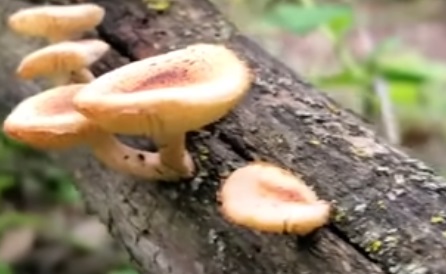How to Grow Mushrooms in Kenya: In recent years Mushroom Farming in Kenya has gained momentum as people continue to discover the economic and nutritional importance of mushrooms.
Before one starts on mushroom farming it’s a must to get some training. Knowing how to grow mushrooms in Kenya will actually be of great benefit since mushrooms aren’t grown in open fields like other crops.

Contents
How to Grow Mushrooms in Kenya
Simple steps
- Have a small piece of land.
- Build a Simple mushroom House.
- Prepare your substrate.
- Buy Nylon Bags.
- Put your sterilized substrate in the nylon bags and
- Add The Mushroom Seeds/Spawns.
How to Grow Mushrooms in Kenya
Below we have looked at tips on how to grow mushrooms.
1. How to Build a Mushroom Growing House?
A mushroom house does not need to be sophisticated but there vital things that need to be considered like the temperature and humidity. The temperature inside the mushroom house should not exceed 25-27c and the humidity level should range between 80-83%. A simple way to maintain temperature cheaply is by putting papyrus mats beneath the iron sheets. In places where it’s difficult to get the papyrus one can place dried banana stems, dry maize plants, etc. To further maintain the temperature put a polythene lining on the ceiling. Light does not need to be completely blocked out therefore a simple net can be put on the windows to assist air circulation.
2. Mushroom seeds or spawn.
Mushroom seeds can be purchased locally and one kilogram is approximately Kshs 500/=. One kilogram of mushroom seeds can lead to the harvest of ten kilograms.
3. How to prepare your mushroom substrate?
The unique thing about mushrooms is that they cannot be grown directly to the soil, one will need substrate. The substrate is basically treated material which you will plant the mushroom seeds. It can be prepared from agricultural waste such as wheat husk, rice husk, beans remains, dry banana leaves, groundnuts, or coffee waste. Substrates have to be sterilized either by heating or through pressure cans. Sterilization is important because it kills some of the fungus or moles that may compete with the mushrooms. Sterilized substrates should be kept in clean nylon/cans to avoid additional infection of other fungus or bacterias.

Different mushrooms thrive well on different substrates. For instance, oyster mushrooms thrive in hardwood shavings. Some low nutritional substrates like wheat husk will require an additional nutritional boost by mixing it with molasses. In the case of sugar and sorghum bagasse, you can add bean straws. For someone who chooses to add molasses, it is good to note that it’s possible to have micro-organisms in the molasses. To kill the micro-organisms you can boil the molasses in a clean container for forty-five minutes. After boiling and cooling, mix it with the substrate you have chosen. Once the substrate is ready place in a container or nylon bags, then put in the mushroom spawn or seeds. Finally put them in the mushroom house.
4. How to sterilize mushroom substrate?
Substrate sterilization will vary depending on the type and quantity. Below are ways to sterilize your mushrooms substrate
- Use of chemicals such as chlorine or hydrated lime.
Just dip the substrate in the chemical for 24 hours then remove and let it dry. No need to rinse the chemical
- Boiling
Put water in a basin and add the substrate. Let it boil for 60-90 minutes and then drain the water and don’t dry for too long or it will be contaminated again
4. Harvesting of mushrooms.
It takes around 6 weeks to harvest for the first time, for the next three months you can harvest the mushrooms weekly.
Training on How to grow mushrooms in Kenya.
To know how to grow mushrooms one can get training from individuals, certified institutions, and NGOs. An easy internet search of the same issue will bring several contacts. One of the institutions to get the training is Jomo Kenyatta University Agriculture and Technology (JKUAT). The training charges range depending on each individual but mostly it’s between Kshs 10,000-30,000/=.
Mushroom Market in Kenya.
A simple way to market your mushrooms in Kenya is through online marketing. One could also opt to contact several groceries or restaurants. Since the demand for mushrooms is higher than supply, there will be a ready market. Demand is still high even for exportation.
Is Mushroom Farming Profitable in Kenya?
One kilogram of mushrooms spawn is 500, with good environment the expected harvest could be 10 kilograms and each kilo goes for 400-600 shillings. This high-profit margin means that one will take a shorter time to break even and eventually make profits

Steve George is Blogger, a marketer and content writer. He has B.A. in Economics from the University of Washington. Read more about Mzuri Mag.